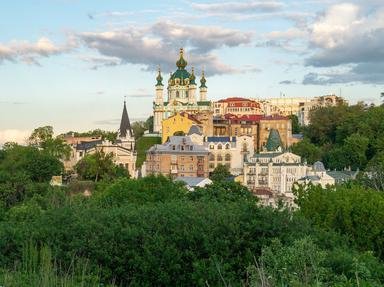Quiz Answer Key and Fun Facts
1. In which eastern region of Ukraine is Bakhmut located?
2. Why did Ivan the Terrible issue an order to establish the settlement of Bakhmut in 1571?
3. What well-known group of horsemen was charged with protecting the area around Bakhmut in 1571?
4. Which Russian czar gave the order that the settlement of Bakhmut be upgraded to a city in 1701?
5. Interestingly, after Bakhmut was designated as a city in 1701, the people who were ordered to live there were told to do more than just guard the city. What else were they ordered to do?
6. In 1707-08, Bakhmut became one of the centers for the Bulavin Rebellion, which was an uprising of Donians and which other group?
7. Bakhmut had a name change in 1924 in order to honor a Bolshevik leader.
8. During World War II Bakhmut escaped occupation by Germany.
9. During the 1950s, Bakhmut became well known as the leader in which of the following industries?
10. What is the traditional explanation for how Bakhmut was named?
Source: Author
ponycargirl
This quiz was reviewed by FunTrivia editor
trident before going online.
Any errors found in FunTrivia content are routinely corrected through our feedback system.
